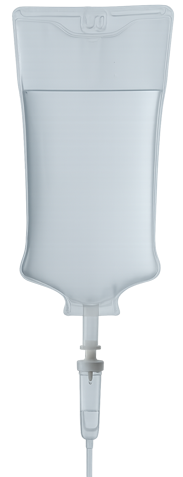Hydrogen Breath Testing for SIBO
We utilize breath testing with the Quintron SC- Breathalyzer to test for:
- Small Intestinal Bacterial Overgrowth Syndrome (SIBO)
- Lactose Intolerance and
- Fructose Intolerance and
What is Hydrogen Breath Testing?
Hydrogen breath testing is used to diagnose three primary conditions. First, hydrogen breath testing is used to diagnose bacterial overgrowth of the small bowel. Secondly, hydrogen breath testing detects sugars like lactose that are not properly digested and metabolized. Thirdly, hydrogen breath testing detects sugars like fructose that are not absorbed in sufficient levels.
What is the principle of the Small Intestinal Bacterial Overgrowth (SIBO) Breath Test?
Hydrogen breath testing is the most common method to diagnose small intestinal bacterial overgrowth (SIBO) in clinical practice. Its advantages are low risk, lower costs than intestinal cultures of small bowel aspirates, and ease of use. SIBO hydrogen breath testing uses the orally ingested carbohydrate lactulose as a substrate.
Hydrogen and methane gas are only produced in the body from intestinal bacteria. Bacteria ferment sugars such as lactulose to hydrogen and/or methane gas. Hydrogen and methane are absorbed by the intestinal mucosa, enter the blood system, and get transported to the lungs. A change in the level of hydrogen and/or methane gas above 20 parts per million within 60 minutes is diagnostic for SIBO. The majority of people with malabsorption produce hydrogen gas. Approximately 15% of patients are methane producers rather than hydrogen producers. These patients will only be properly diagnosed by measuring methane levels. As a result, each breath specimen is measured for hydrogen and methane.
What causes Bacterial Overgrowth?
Normally the proximal small intestine contains no or low levels of colonic-type bacteria. Small intestinal bacterial overgrowth is the presence of anaerobic organisms in a location of the small bowel where they are not usually found. SIBO is defined as the presence of >105 colony forming units per milliliter (cfu/ml) in the proximal small intestine. It has been suggested that even 103 cfu/ml can induce symptoms of bacterial overgrowth if the bacterial species are colonic in origin.
Two major factors are responsible for controlling the number of bacteria in the small bowel. Normal small bowel motility is the first defense against attachment of bacterial organisms to intestinal walls. Gastric acid is the second defense by destroying invading ingested organisms. Both of these mechanisms are compromised during the natural aging process and also by the presence of anatomical changes, functional pH or dysmotility syndromes, or miscellaneous diseases that cause motility derangements.
Conditions associated with Bacterial Overgrowth?
The aging of the population has increased the incidence of bacterial overgrowth due to atrophic gastritis occurring in 20-30% of the healthy elderly population which is the most common cause of reduced gastric acid secretion. This is a predisposing factor for bacterial overgrowth.
SIBO occurs commonly in patients with diabetes mellitus, particularly those with gastroparesis. It appears that SIBO occurs as a consequence of impaired gastrointestinal motility due to an underlying enteric or autonomic neuropathy. The obesity epidemic has led to an outbreak of new diabetes mellitus cases.
IBS is linked with SIBO, which makes sense because it relates to the frequent IBS complaint of bloating after eating. As the bacteria ferment food, gas is released into the small intestine, causing painful bloating and other symptoms. Patients with IBS should be tested for bacterial overgrowth if they have diarrhea, abdominal pain and increased flatulence within 30-45 minutes after eating.
Bacterial overgrowth within the small intestine should be considered in the differential diagnosis of any patient who presents with diarrhea, steatorrhea (fatty liver), weight loss, or macrocytic anemia, particularly if the patient is elderly or has had previous abdominal surgery.
Bacterial overgrowth is commonly associated with various clinical conditions that affect intestinal motility or altered pH. Disturbances in small bowel transit (e.g., chronic intestinal obstruction, intestinal stricture, blind loop) and gastric acid secretion (e.g., achlorhydria, acid suppression) are the principal predisposing factors providing a clue to patient groups at risk of this condition.
In addition, patients are at potential risk of small intestinal bacterial overgrowth with the following clinical conditions:
- Irritable bowel syndrome
- Diabetes mellitus
- Cirrhosis
- Immunodeficiency syndromes
- Chronic pancreatitis
- End stage renal disease
- Inflammatory Bowel Disease
- Celiac Disease
- Short bowel syndrome
- Radiation enteritis
- Antisecretory and antimotility medications
At What age does Bacterial Overgrowth occur?
The age of onset of bacterial overgrowth is variable. Bacterial overgrowth will be more common in older adults with age-related changes in dysmotility and hypochlorhdria. However, pediatric patients with any of the above conditions can develop bacterial overgrowth.
What are the symptoms of Bacterial Overgrowth?
- Abdominal cramps
- Abdominal bloating
- Diarrhea
- Gas (flatulence)
- Steatorrhea (fatty liver)
- Weight loss
- Features associated with micronutrient deficiencies (Vitamins B12, A, D, and E, iron, thiamine, nicotinamide)
How is Bacterial Overgrowth treatecd?
The goal in treating SIBO is not be to sterilize the gastrointestinal tract but to reduce the number of pathogenic bacteria present and to treat the underlying cause which led to the overpopulation of bacteria. We use botanical and other natural therapeutic agents to restore normal bacterial population and gut




